Everyone has heard of the terrible diseases that mosquitoes and other parasites transmit, such as malaria, but not everyone knows that right now they can live inside us.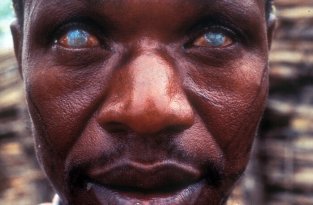 Parasitism is very common innature. There are parasitic animals, parasitic insects, parasitic worms, parasitic plants, etc. There are so many of them that even some parasites have their own, and they can be the most bloodthirsty in every way. All the parasites in the world live at the expense of someone, at the expense of their victim. But despite this, they may not receive food for themselves, their life cannot be considered easy and simple. The host's body is busy looking for ways to kill intruders. To survive, the parasite must resort to all kinds of tricks. Parasites, namely worms and beetles, are living things that freely crawl inside the human body. The worst thing is that they can live inside a person for years and decades and not make themselves felt.
Parasitism is very common innature. There are parasitic animals, parasitic insects, parasitic worms, parasitic plants, etc. There are so many of them that even some parasites have their own, and they can be the most bloodthirsty in every way. All the parasites in the world live at the expense of someone, at the expense of their victim. But despite this, they may not receive food for themselves, their life cannot be considered easy and simple. The host's body is busy looking for ways to kill intruders. To survive, the parasite must resort to all kinds of tricks. Parasites, namely worms and beetles, are living things that freely crawl inside the human body. The worst thing is that they can live inside a person for years and decades and not make themselves felt.
Naegleria fowleri
Zombies are mindless creatures that feed on the human brain. Naegleria fowleri behaves in the same way, it also eats the brain and damages the nervous system. Basically, it destroys the human brain.
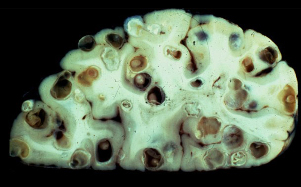
The few victims, on whose body a small amoeba has slipped, are doomed. Naegleria fowleri is called a brain-eating amoeba and no one knows how to stop it. Despite their microscopic size, amoebas belong to the animal kingdom and belong to the Amoebidae family. They mainly inhabit rivers, ponds and other bodies of water. Symptoms that accompany the presence of this parasite include headache, nausea, vomiting, and even death. This is a very rare parasite; only about a thousand cases of infection are known in the world. The source of infection is warm bodies of water, so swim carefully.
Onchocerciasis
Onchocerciasis is a worm, helminth, that causes blindness in a person. There is a great chance of getting it in uncivilized regions. Dermatological changes in this disease are characterized by the formation of dense fibrous nodules, an itchy rash, slowly healing ulcers, areas of depigmentation.

The parasite affects only the human cornea, causing river blindness. Human immunity is unable to recognize the parasite, so blindness is inevitable. The only source of invasion and the final host of helminths is a sick person with such disease. Blood-sucking Simulium mosquitoes that live near rivers and bodies of water act as intermediate hosts as well as carriers.
Roundworm
This parasite is very often called an elephant parasite, not because it is huge, but because of the way it externally disfigures the human body. After entering the human body, the parasite behaves in the same way as others. The larvae of the parasite are carried by blood-sucking insects, which enter human blood, settle in the subcutaneous and lymphatic tissues of the body, causing damage to the lower extremities, as a result of which they significantly increase in size. In medicine, lymphatic filariasis is often called elephantiasis.

A year later, the worm becomes an adult and enters the lymphatic system, which controls the flow of fluid from the body. When an adult worm with "comrades" blocks the drainage channels, the liquid does not come out, it accumulates, as a result, the limb becomes like an elephant's leg. It is easy to determine the presence of parasites in the body by one symptom: bad breath. You should ask your loved ones if your breath smells in the morning (before brushing your teeth). If so, there is a 99% chance that you are infected with parasites.
Loa loa
Loa Loa is more like the name of a cocktail on a tropical beach on an exotic island. But, in fact, it is a parasite that can become infected with an insect bite. The females of the parasite are 70 mm long and 0. 25 mm thick. Males are about 2 times smaller than females. The habitat of worms is the subcutaneous layer of the human body. When an infected person bites, the loa loa, together with the blood, removes hundreds of microfilariae, which begin to actively develop. This process takes a week to complete.
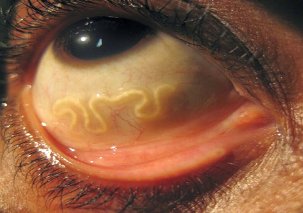
The larva penetrates through the bite into the human body, lives for some time in the area of the bite, causing inflammation and pain. Over time, the worm grows and can penetrate the eye, a person will even feel how it moves there. By biting a healthy person, Chrysops introduces Loa loa parasites into their bloodstream in the invasive stage. Insects attack people during the day and can be attracted to smoke and moving objects. The usual habitat is forests located along the banks of flowing rivers, but they are sometimes found in settlements. Once in the human body, loa reach maturity in 6 to 18 months and continue to parasitize for up to 10 to 15 years. The worm can live in the body for up to 17 years.
Gadfly
The horsefly can lay eggs in the human body. If a horsefly has chosen someone as its victim, then it will give birth to thousands of larvae that will hatch from the eggs. It is good for someone who has not experienced the sensations and consequences of encountering such a fly. If you are lucky, you can get away with an allergic reaction. In the worst case, the human or animal organism acquires new "tenants": larvae that parasitize tissues and organs.
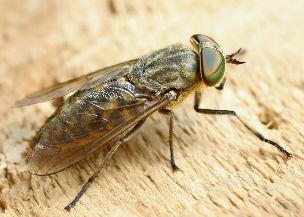
During its short life, a person can lay up to half a thousand eggs and not just anywhere, but in the immediate vicinity of the "incubator". It is mainly animal hair, and females choose areas with a thick undercoat and short hair: head, area around the lips, belly and inner thighs. The horsefly often perches on forage plants. The larva, to grow, will eat everything it finds around it, that is, meat, as a result a hole will form in the skin and the person will feel how the larva moves under the skin. During the day, the larvae of the parasites migrate to small peripheral vessels. In the period from 9 to 18 hours, its highest concentration is observed in the vessels. In the body of a definitive host, adult worms can parasitize for 17 years. Removing the parasite or eggs will require the help of a surgeon.
Water flea
Sea fleas are one of the representatives of tourist places that can cause great discomfort to vacationers. These small crustaceans are capable of stinging humans. When a person swims or bathes in bodies of water with unfiltered water, they can swallow a water flea. These fleas love polluted lakes and ponds, where they sit and wait for their prey. When they enter the stomach, the gastric juice dissolves the flea, but the water flea that was inside the flea passes away.

A year later, the worm already reaches 60-90 cm in length. The human body becomes small for him and tries to surface. The body begins to burn, there is a desire to soak in cold water to get rid of the burning sensation and pain. But this is what the worm needs! It releases thousands of its larvae into the water, while it remains in the body. The most common habitats for sea fleas are coastal areas. After all, water is always very humid, and even warm weather is ideal for raising young.
Vampire fish
Both parents and representatives of the authorities always remember that you cannot write in a river, a lake or a swimming pool. Now, sure, nobody will do this by reading a vampire fish. In nature, adults exceed a meter in length, in an artificial environment slightly less, but still reach impressive sizes and weights (more than 10 kg). At first glance, this fish looks harmless. Small, thin and translucent body. What is the danger? The fact is that this fish feeds on blood.
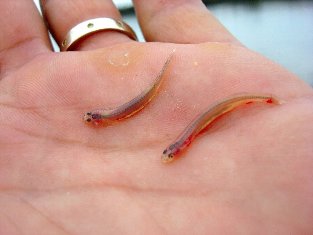
These are small fish. Some species can grow up to 15 centimeters, while others are no longer than a matchstick. It would seem that a small harmless fish parasitizes other species of fish, feeding on their blood. Entering a person causes incredible suffering, and if you do not provide medical assistance to the victim in time, a lethal outcome is possible. Outwardly, they are very similar to small translucent eels. Such a narrow and elongated body shape allows them to easily climb the gill slits of fish, the urogenital organs of large mammals and humans. It is a very small fish that enters the bladder when urinating in the water. In the body, it feeds on blood and flesh and causes severe pain.
Ascaris
Ascaris, a worm, in the human body can grow up to 30 cm in length. Transmission of ascariasis occurs from person to person. But it is impossible to get sick from contact with a sick person. This is evidenced in the life cycle of the human roundworm. It is easy to get infected in rural areas. Its life inside is not accompanied by any symptoms until the number of worms reaches the maximum.
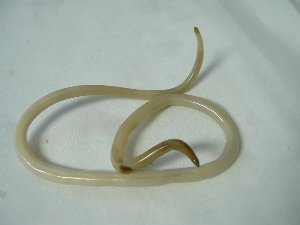
Roundworm eggs begin to develop after entering the soil along with feces. The maturation of the larva in the egg must be facilitated by access to oxygen, as well as the optimal air temperature, up to 25 degrees Celsius. The larvae enter the human body along with unwashed vegetables, fruits, and herbs from the garden. If the roundworm has entered the body, headaches, fever, nausea, diarrhea, etc. they will torment him. Basically, roundworms affect children more often than adults, as they wash their hands less often.
Scabies mite
The scabies mite causes itching and red spots on the skin. The mouthpart is slightly extended forward, of a special type, which allows the tick to penetrate under the human skin. The front legs are equipped with spikes that help the tick to move under the skin, creating passageways and paths. The bristles located on the hind legs help the animal to stay inside. This small parasite burrows holes in the host's skin, where it reproduces; feeds on blood.
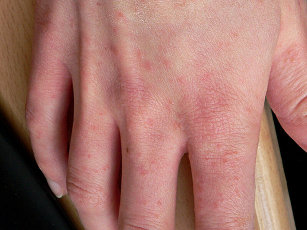
Mites can affect any part of the skin, but are most often found on the back of the hands, in the interdigital spaces, the armpits, and the perineum. The complete cycle lasts from 10 to 14 days. All females have a special secret that allows them to loosen the epidermis. The life span of female ticks lasts up to 60 days, during which time they constantly burrow new ducts under the skin.
Lent
Tapeworm is the worst parasite, if I may say so. It lives mainly in the human brain and lives for 20 years. During this period, symptoms appear that are so common that it is extremely difficult to associate them with the vital activity of the parasite. The first signs of the disease can appear at different times (most often after 2-3 weeks, with ascariasis - after 2-3 days, and the incubation period can last from 6 to 18 months). Broad tapeworms adversely affect a person due to the release of waste products, mechanical damage to the intestines, poor absorption of nutrients and vitamins, as well as the development of allergic reactions.
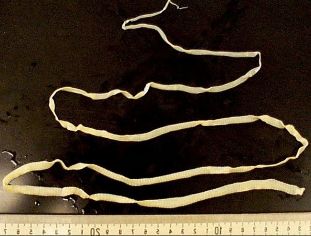
When he grows up, he seeks to kill his master. You can become infected with the parasite by drinking contaminated water and meat.
All of these parasites are extremely dangerous to humans and can cause death.








































